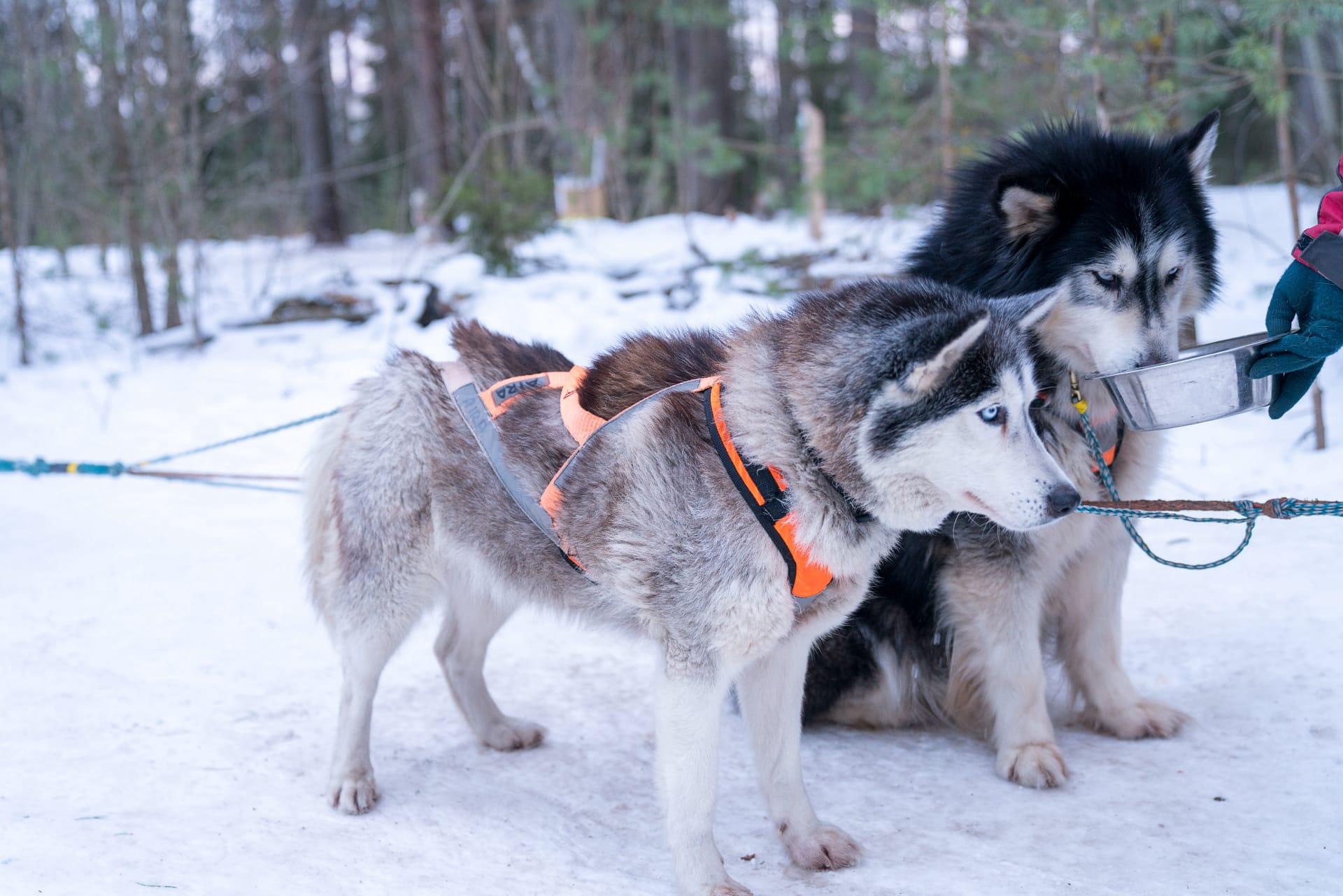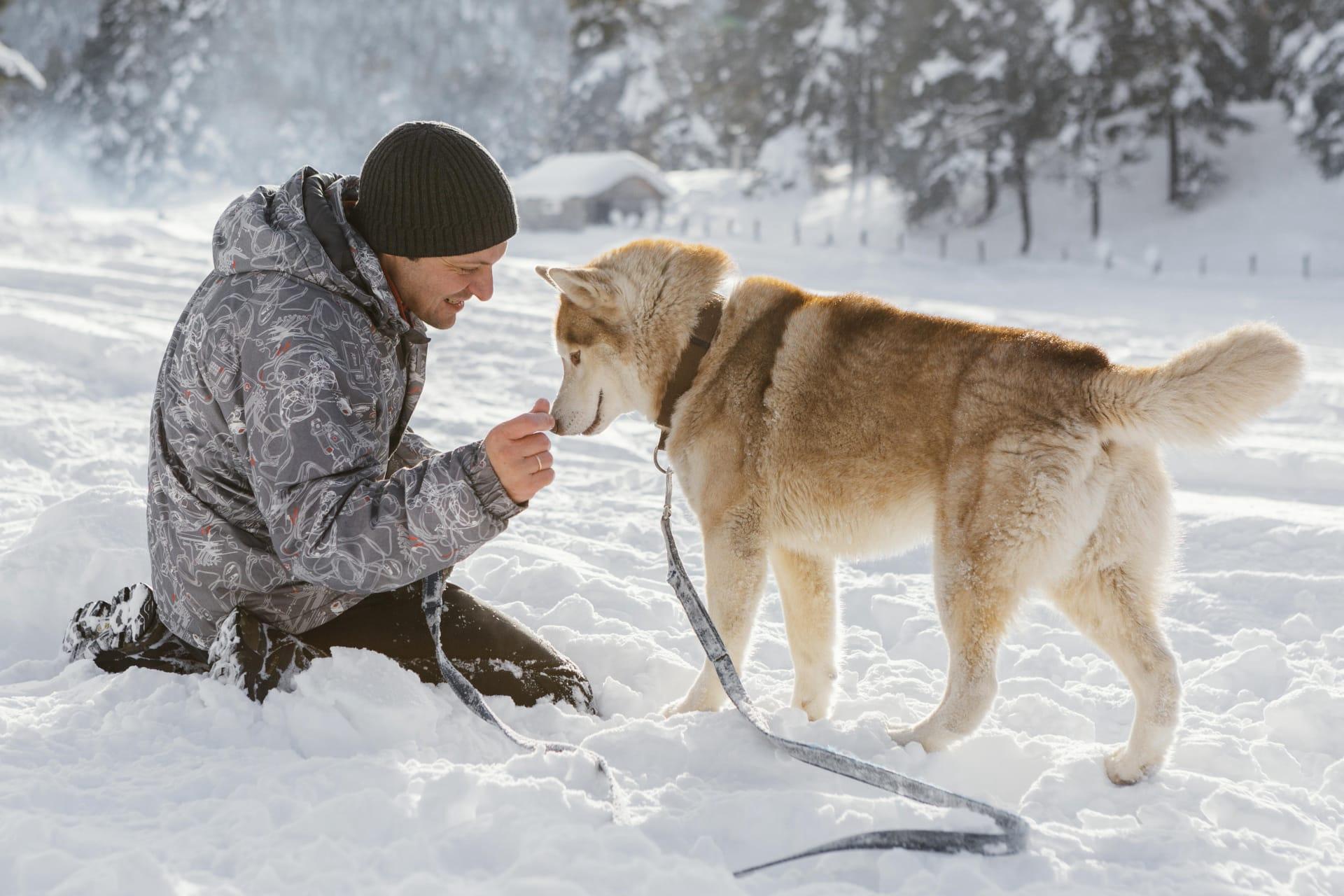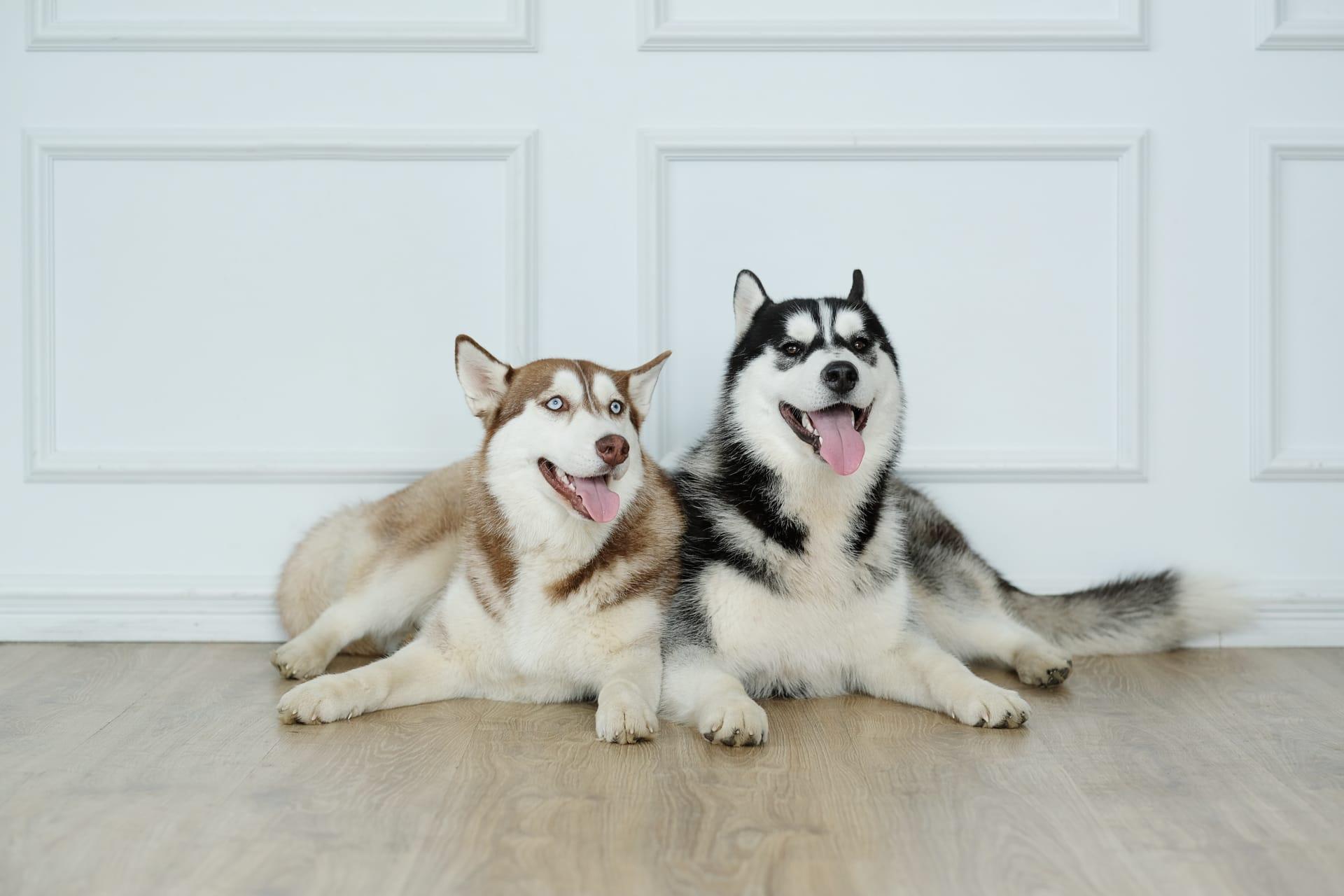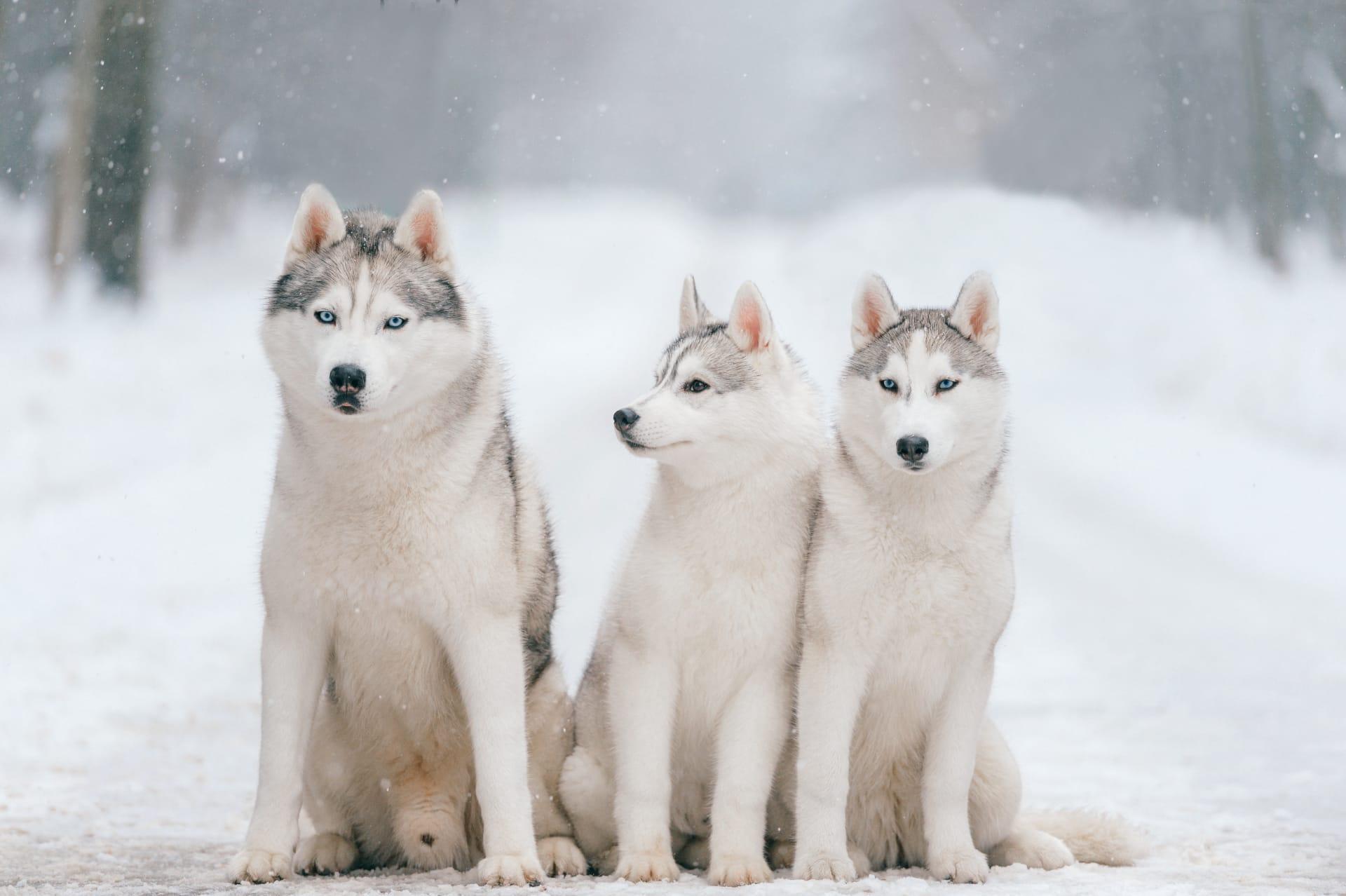1
Huskies are renowned for their remarkable endurance and ability to withstand cold temperatures, traits that stem from their origins as sled dogs in the Siberian Arctic. Their double-layered coat, comprising a dense undercoat and a longer topcoat of short, straight guard hairs, is specifically designed to provide insulation against frostbite and hypothermia. This unique fur structure allows them to survive in temperatures as low as -60 degrees Celsius (-76 degrees Fahrenheit), making them one of the most cold-resistant dog breeds.
Another intriguing aspect of Huskies is their striking eye color, which can vary from blue, brown, or even a combination of both within the same individual, known as heterochromia. This genetic trait is not just a cosmetic feature but also a subject of scientific interest, as it results from the distribution and concentration of melanin in the iris. Surveys suggest that approximately 40% of Huskies have blue eyes, a significantly higher proportion compared to most other dog breeds, highlighting a distinctive genetic marker of the breed.

2
The Husky's vocal range is a fascinating aspect of their behavior, characterized not just by barking but by a wide variety of sounds including howls, whines, and chirps. This vocal versatility is more than just an amusing trait; it played a crucial role in the breed's development in snowy, isolated environments where long-distance communication was vital. The ability to produce a range of sounds enables Huskies to communicate effectively with both their human handlers and other dogs, especially important in the context of sled teams where cooperation is key.
Huskies also possess a unique physical feature known as the "snow nose" or "winter nose," where their nose changes color from black to pink during colder months. This phenomenon, medically termed "nasal hyperkeratosis," involves a temporary loss of pigment in the nose's skin, thought to be a reaction to temperature changes. While it's mostly cosmetic and doesn't affect the dog's health, it's a distinct characteristic that adds to the Husky's winter-adapted appearance.

3
One of the Husky's most remarkable physical capabilities is their efficient energy metabolism, which allows them to travel long distances without fatigue. This trait is underpinned by their ancestral role pulling sleds over vast stretches of icy terrain, where food might be scarce. Studies have shown that Huskies can regulate their metabolism during long-distance runs to maintain energy levels, a phenomenon not observed in most other dog breeds. This metabolic efficiency means they can cover distances up to 100 miles (160 kilometers) in a single day with proper training and conditions.
Their coat's reflective property is another adaptation to their Arctic origins. The Husky's fur reflects a significant amount of UV light, much like snow does, which helps in keeping them cool in the summer months despite their thick coat. This reflective quality, combined with their ability to shed their undercoat during warmer seasons, enables Huskies to live comfortably in surprisingly warm climates, contrary to the assumption that they are only suited to cold environments.

4
Huskies have a strong pack mentality, inherited from their ancestors who lived and worked in groups. This social trait makes them excellent companions but also means they require a lot of interaction and do not like being left alone for long periods. Their pack-oriented nature also contributes to their reputation as escape artists; they often try to break free to explore or seek company, leading to the advice that Husky owners should have secure, high fences and engage in regular, active play or work to satisfy their social and physical needs.
An intriguing behavioral trait of Huskies is their cleanliness. Much like cats, Huskies are known to groom themselves and their pack mates, a habit that helps in maintaining their coat's insulation properties and overall health. This self-grooming behavior reduces the need for frequent baths, which can strip their coat of natural oils and diminish its protective qualities. Their fastidious nature, combined with a lack of the typical "dog smell," makes them uniquely low-maintenance in terms of grooming among large dog breeds.

5
Huskies have a genetic predisposition for a condition known as Zinc Deficiency Dermatosis, which can lead to skin problems if their diet isn't carefully managed. This condition is due to their unique metabolic needs, which include a higher requirement for zinc, crucial for maintaining healthy skin and coat. Proper nutrition, especially in diets formulated for active breeds, can prevent these issues, highlighting the importance of tailored care for Huskies' specific health needs.
Despite their fierce and wolf-like appearance, Huskies are known for their friendly and gentle temperament, often making them poor guard dogs. They are more likely to greet an intruder with enthusiasm than aggression, owing to their sociable nature. This disposition stems from their historical role in close-knit sled teams and communities where aggression could be detrimental. Their friendly demeanor, combined with high energy levels and intelligence, makes them well-suited as family pets, provided they are given ample space to exercise and mental stimulation.